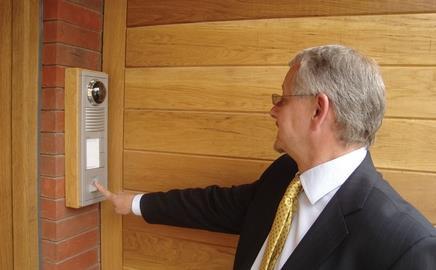Josephine Smit looks at the latest data cabling and video on demand technology that can help communities get educated, get political and get jobs
They said the world wide web would make people more isolated; the social networking site Facebook has proved otherwise. So if you put fibre-optic cabling and video on demand into a housing estate, would you turn a community into a disparate group of 24-hour-telly watching couch potatoes? Far from it. In fact, residents of the 600 homes on the Carpenters estate in Newham, east London, have become one of the most active and engaged communities around.
In the six years since the government-initiated Carpenters Connect project got under way, the estate’s residents have made video diaries about their lives, used technology to increase their skills and become so active that a vote on an estate issue got a turnout of close to 90%.
Despite the advances in Newham smart infrastructure remains a rarity in British homes, largely because of cost. But a tipping point has arrived, believes Kim Spence-Jones, technical director of OpenHub. With the right design and planning, a single integrated fibre-optic network to a house can cost the same as the array of conventional cables, he says. “We are at breakeven point and, from now on, it will get dramatically cheaper.”
To demonstrate the benefits that could be delivered by smart infrastructure, OpenHub equipped the six homes at the BRE Innovation Park with a scaled-down version of the technology used on the Carpenters estate: a high-performance fibre-optic link to a community digital centre that can provide video on demand.
The integration of technology was not about showing off the ultimate in television viewing or catering to market demand for clever gadgets, although OpenHub has fitted one house, by Hanson, with fingerprint recognition locks (pictured right), video entry and smart control of lighting and heating. The objective here was, as Spence-Jones puts it, to show how it is possible “to use technology to improve people’s lives”.
Both the Newham project and the innovation park demonstrate the potential of smart infrastructure to be a powerful tool for education and communication in districts where residents cannot afford to buy a home computer and where educational and employment opportunities are limited.
Spence-Jones calls it prosumer technology, turning the consumer into a producer by giving them the tools to make their own videos, enhance their skills and perhaps eventually generate their own wealth.
All residents need in order to embark on this process is a TV and a set-top box, the latter usually provided by a commercial entity, in the form of an estate management company. The set-top box operates as a “thin-client” computer, which allows use of the internet and basic computer software, including educational programs, via the television set. OpenHub gives residents training in video-making.
Response to the technology at the innovation park has been “mindblowing”, says Spence-Jones. “We’ve been banging on about this for four to five years and now everywhere I go, people are saying that there is a need to think of the estate as an entire community and not as individual houses. It has led to some interesting contacts.”
Even the Hanson house has provided useful lessons to park visitors, showing off technology that was affordable and, despite the sci-fi connotations of fingerprint recognition locks, extremely useful, particularly to the elderly and infirm. The lessons are not over either, as OpenHub technology is monitoring the energy performance of the Hanson house.
Spence-Jones says his company has learned much from its involvement in the innovation park. “It has highlighted the cultural differences between the different elements of the industry,” he says.
“In our industry product life-cycles are measured in months, but we are dealing with an industry where a regeneration project can take decades. The innovation park has made the entire supply chain more visible to one another we’re usually only talking to the mechanical and electrical contractor, but this has given us an opportunity to learn more about the overall process.
“We’ve also learned that you have to do a lot more thinking upfront. You can go into a house and put a telephone cable in at the last minute, but when our infrastructure is connected to the generation of renewable energy, it becomes part of the masterplanning of the estate.”
Serious money can also be saved by upfront thinking. Spence-Jones points out that 20 years ago, smart technology accounted for 5-6% of a building cost, now that proportion can be as much as 35%.
With the financial viability of smart technology now proven, Spence-Jones looks ahead to a time when communications becomes “the fourth utility” and “data connections are as ubiquitous as the 13 amp socket”.
He adds: “We want to apply the lessons of the innovation park to a middle-sized estate, either new build or a regeneration project. We hope that this will lead to collaborations on bigger things, like the eco-towns perhaps.”
Source
RegenerateLive

























No comments yet